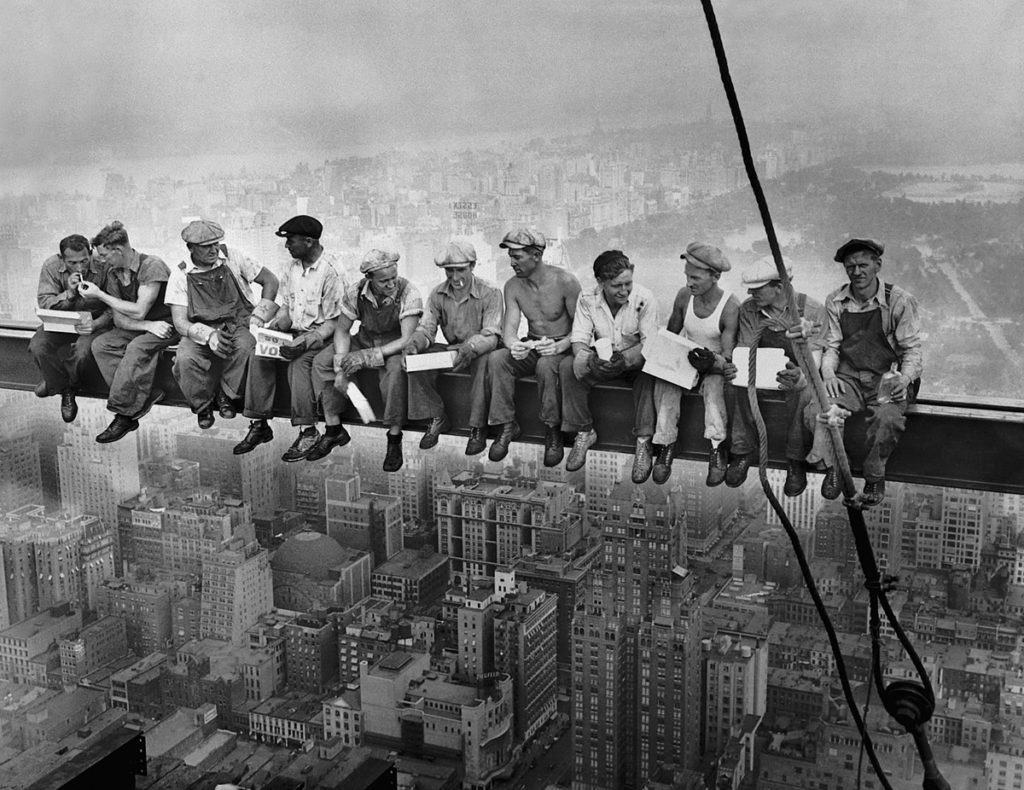September of this year will mark another anniversary of the famous photograph of the superheroes of the heights. I’m not referring to The Justice League, but to the eleven workers in the iconic “Lunch in the Skyscraper” portrait. It was on September 29, 1932, on the 69th floor of Rockefeller Center, when these men posed, just like that, sitting on a steel beam 280 meters above the ground. The streets of New York and photographer Charles C. Ebbets witnessed the bravery of those workers.
Of course, in the midst of an economic recession, they did not have many options. Moreover, it is important to consider that it was a different era. Although a century has not yet passed, these 92 years have seen significant reforms in labor rights and workplace safety. For example, on December 29, 1970, President Nixon signed the Occupational Safety and Health Act of 1970 (the OSH Act), which led to the establishment of the Occupational Safety and Health Administration (OSHA). This marked a milestone in the protection of life on the job.
Subsequently, similar efforts began to emerge in Latin America. In Costa Rica, the Instituto Tecnológico de Costa Rica established a career in Occupational Safety and Environmental Hygiene Engineering. Over several decades, professionals from TEC and other universities have led multidisciplinary teams in all productive sectors, seeking to improve safety conditions at work for hundreds of thousands of people in our country.
So, is it necessary for today’s workers to become “superheroes” like the eleven Rockefeller Center workers, risking their lives to earn their livelihood? Apparently some state institutions have that perception.
Heroism in the MOPT
On April 1, works began on the bridge over the Tempisque River, known as “La Amistad”, although some might call it “La Enemistad”. The Ministry of Public Works and Transportation (MOPT), responsible for the works, made several publications in social networks highlighting the pride felt by having these “superheroes” working at heights in one of the towers of the bridge. They even created a montage with “Spiderman” and, comically, mentioned that Spiderman was taking the spotlight away from the real “superheroes”.
Heroism disappears when the safety of these people is not guaranteed. They are performing a job, they are subordinates and, beyond the principle of refusal to work, they need to bring sustenance to their homes. There are people who depend on them to eat and study.
The photographs show that the workers were using a rudimentary and insufficient fall protection system, putting their safety at serious risk. Their lives depended on a single cartridge: the suspension system, leaving them vulnerable to any failure. They lacked secondary protection in the dorsal ring of their harness. Nor did they have a working platform, which would be ideal as a primary system, accompanied by a fall arrest system with secondary and tertiary protection.
Many questions arise. For example, about safety in the ascent and descent, and about what to do in the event of a potential rescue. In a high-altitude incident, every second is crucial, and proper planning is vital for survival.
Debts and priorities
It has been 92 years since the famous photos of Charles C. Ebbets, but in our country there is still much to be done in terms of safety at heights. The most recent annual statistical reports of the Occupational Health Council place falls to different levels as the main form of accident occurrence in the country. This should be a priority in the management of companies that carry out activities at heights.
MOPT publications in social networks leave much to be desired. It is not because of the humor they use, but because they expose to public opinion the technical deficiencies of a very high-risk job, performed by honorable people who do not need to be called “superheroes”, but only require safe conditions to work. The real heroes should be those leaders who have in their hands the power to provide safety to the most vulnerable, whom we do not want to see turned into martyrs. To the contractors: you must guarantee the protection of your workers. Gentlemen of the MOPT: you are responsible for this to happen.

